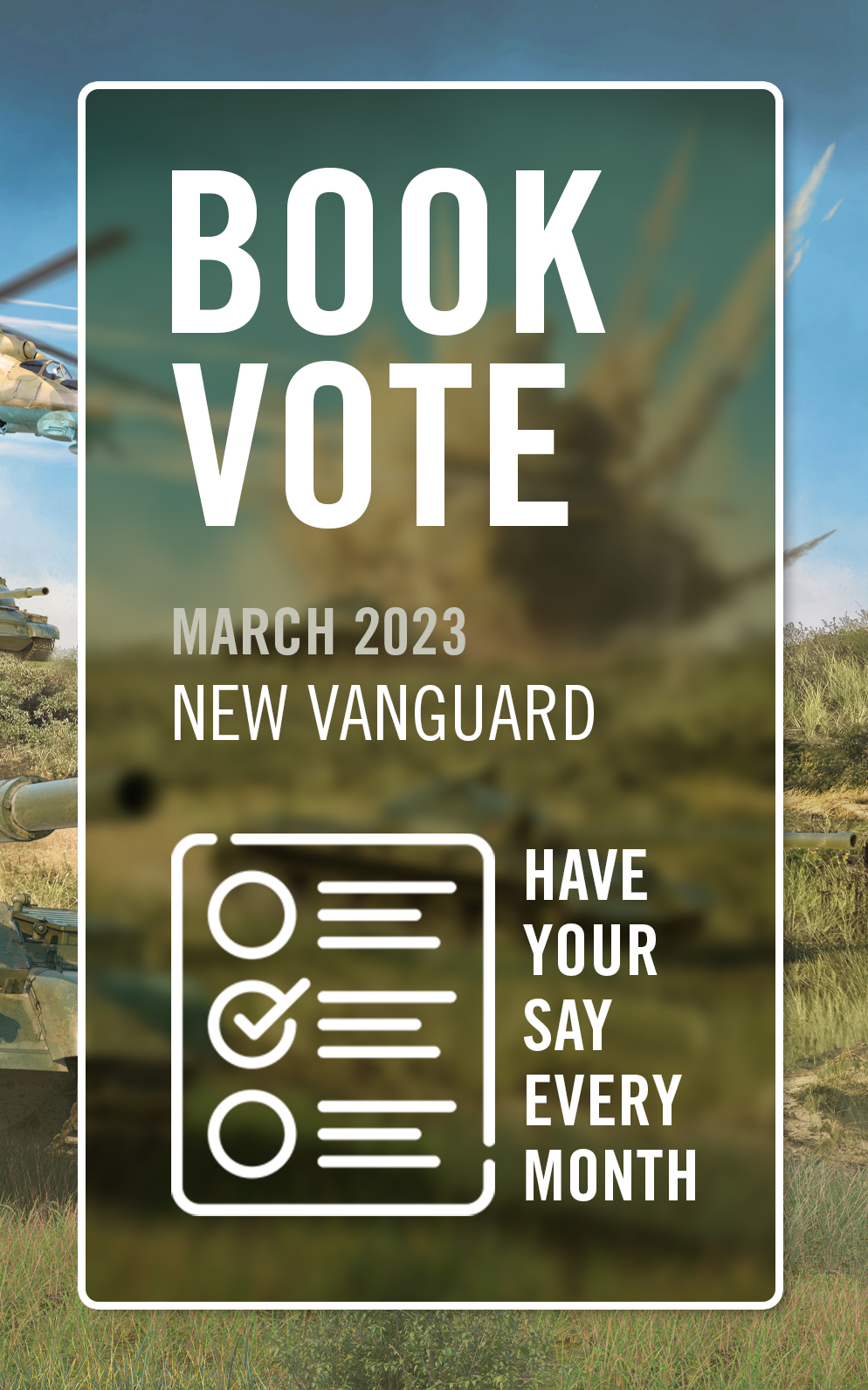
This month's book vote sees five New Vanguard titles battling for your support. Read the full descriptions and have your say by filling out the form on the Book Vote page. Plus, check out the results of last month's Men At Arms Vote.
Tanks in the Caucasus 1942–43
NATO SAMs at the Iron Curtain 1960–91
Warships in the Red Sea 1940–41
Flower-Class Corvettes of World War II
Early Steam Warships 1815–60
Tanks in the Caucasus 1942–43
As the Eastern Front campaign began its second year, Germany turned to the rich Caucasus oilfields, seizure of which would alleviate its oil shortages while denying the same to the Red Army. The ensuing campaign was initially spearheaded by the elite Panzerarmee 1 with a Panzer III-based force, while 17th Army would later join the campaign, bringing Marder tank destroyers into the battle. In addition to their domestically-built types, the Soviets fielded many Lend-Lease tanks in this campaign, which had been sent via the Persian corridor.
NATO SAMs at the Iron Curtain
The front line of divided Cold War Europe was guarded by networks of surface-to-air missile systems of increasing sophistication and deadliness. This book surveys the technology and organization of the NATO long-range missile shield, from the earliest experimental systems to the ultimate Patriot shield, including Nike, HAWK, and Bloodhound.
Warships in the Red Sea 1940–41
A forgotten theatre of World War II, the Red Sea was home to a flotilla of Italian destroyers and improvised commerce raiders. Cut off from any resupply, their role was to interdict – for as long as they could fight – British convoys bound for Egypt, then at the heart of the war. The British, ANZAC and Indian navies had to operate out of Aden, more of an anchorage than a fully functioning naval base. The battle was, on both sides, a shoestring affair, with many gallant episodes and brilliant improvisations on both sides.
Flower-Class Corvettes of World War II
The workhorses of the Battle of the Atlantic, the Flower-class corvette was based on the design of a whaler, built in small commercial yards, and armed specifically for anti-submarine warfare. More than two hundred were built and in addition to their primary users, the Royal Navy and Royal Canadian Navy, they served with the navies of many nations, both during and after World War II.
Early Steam Warships 1815–60
In the closing stages of the War of 1812, the US Navy launched the floating battery Demologos, the first steam-powered combat ship. In 1860, the template for the ironclad era would be set by the revolutionary new HMS Warrior. In between, naval architects and engineers across Europe and America battled to harness the potential of this difficult but transformative technology. This book would look at how steam power, first paddle- and later screw-driven, was introduced to warships from gunboats to ships of the line, and how sail slowly gave way to steam.
Last month, we asked what you would like to see published in our Men At Arms series. Thank you to everyone who voted and provided feedback. The results saw one book take a clear victory. Check out the full results below to find out more!
Justinian’s Army AD 527–65 (33.3%)
Dutch Armies of William III, 1672–1714 (16%)
The Russian Conquest of the Caucasus 1817–64 (20.2%)
The US Army 1815–60 (12%)
US Volunteer Units in Foreign Armies 1914–45 (18.5%)

Comments
You must be logged in to comment on this post. Click here to log in.
Submit your comment